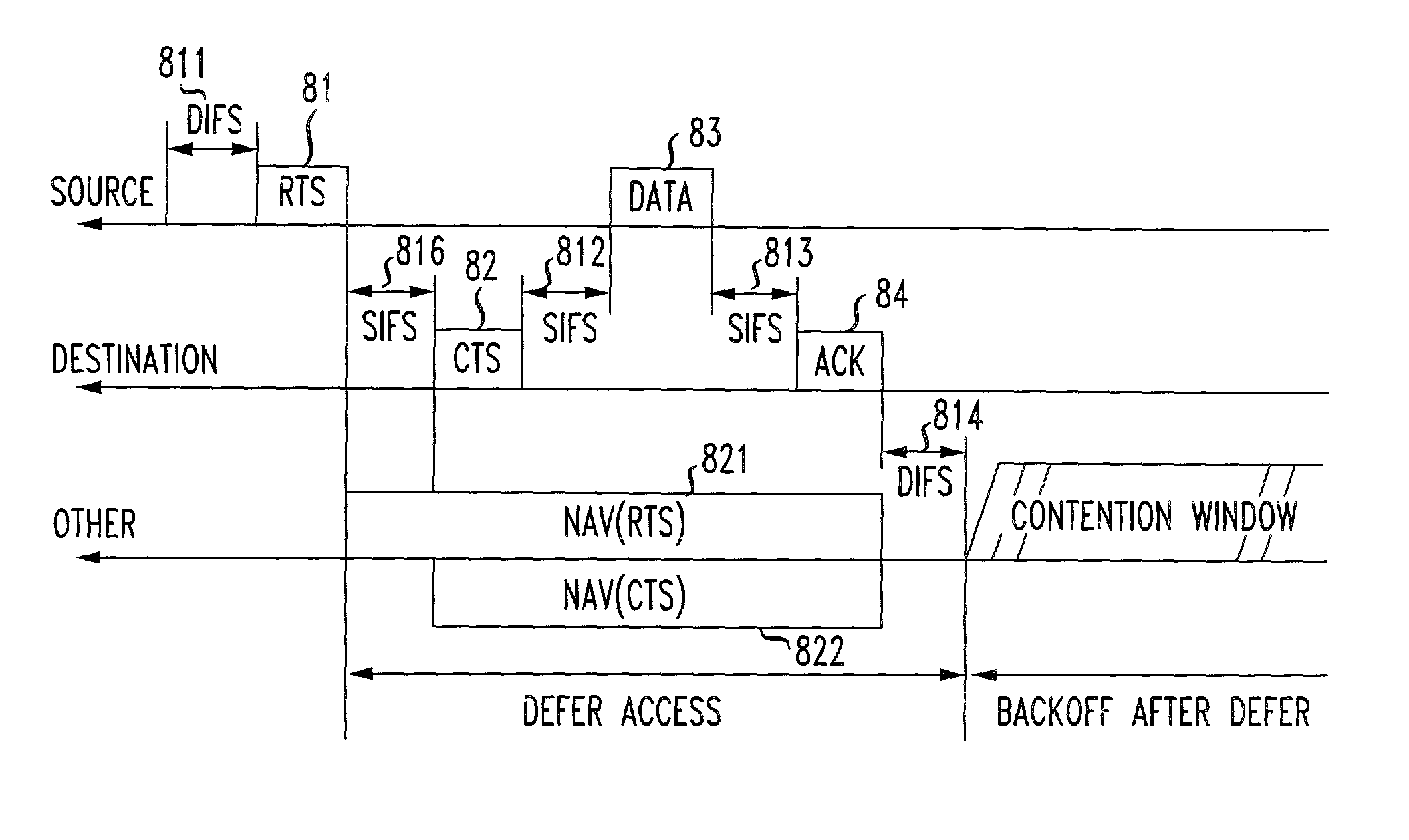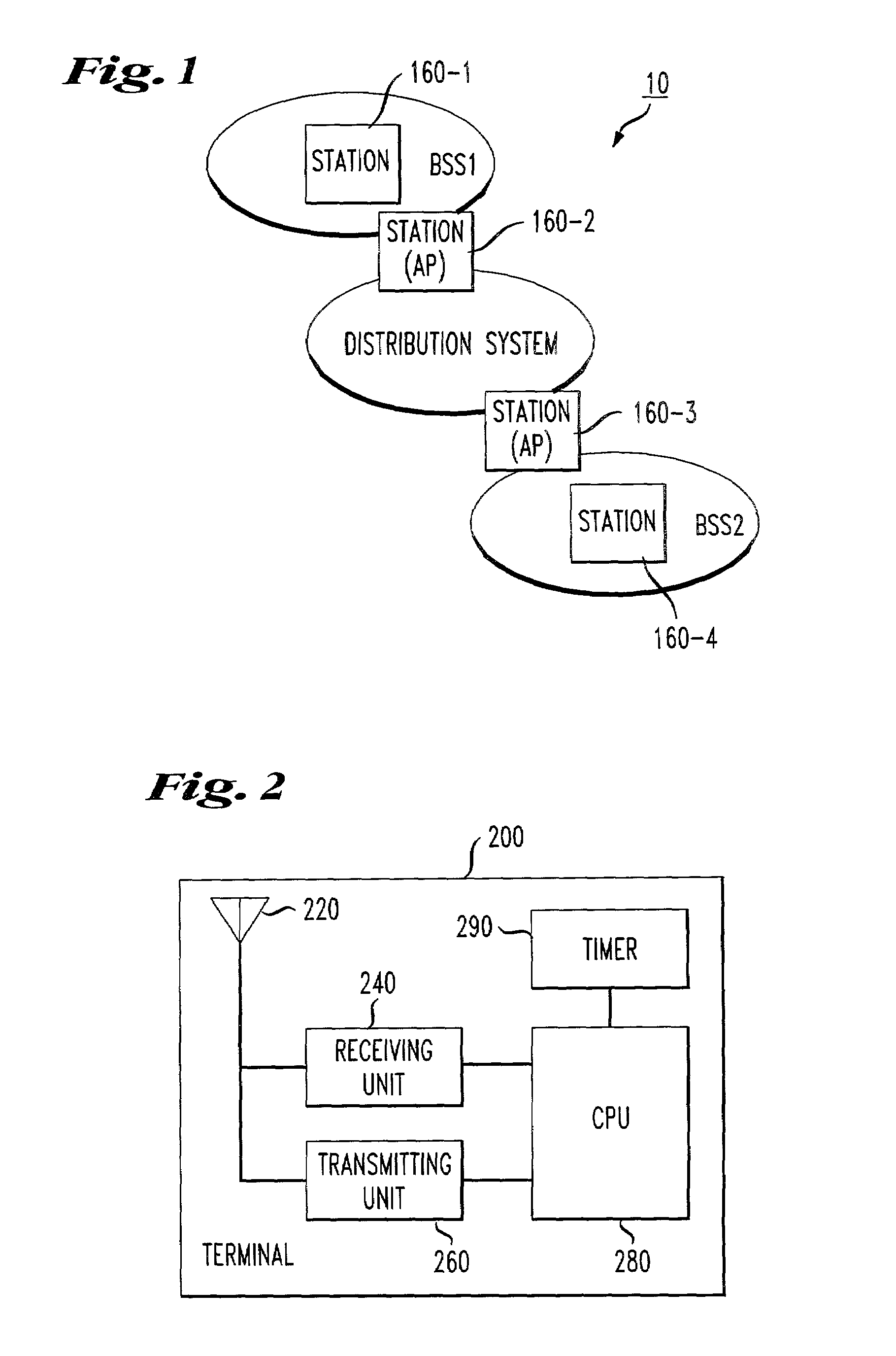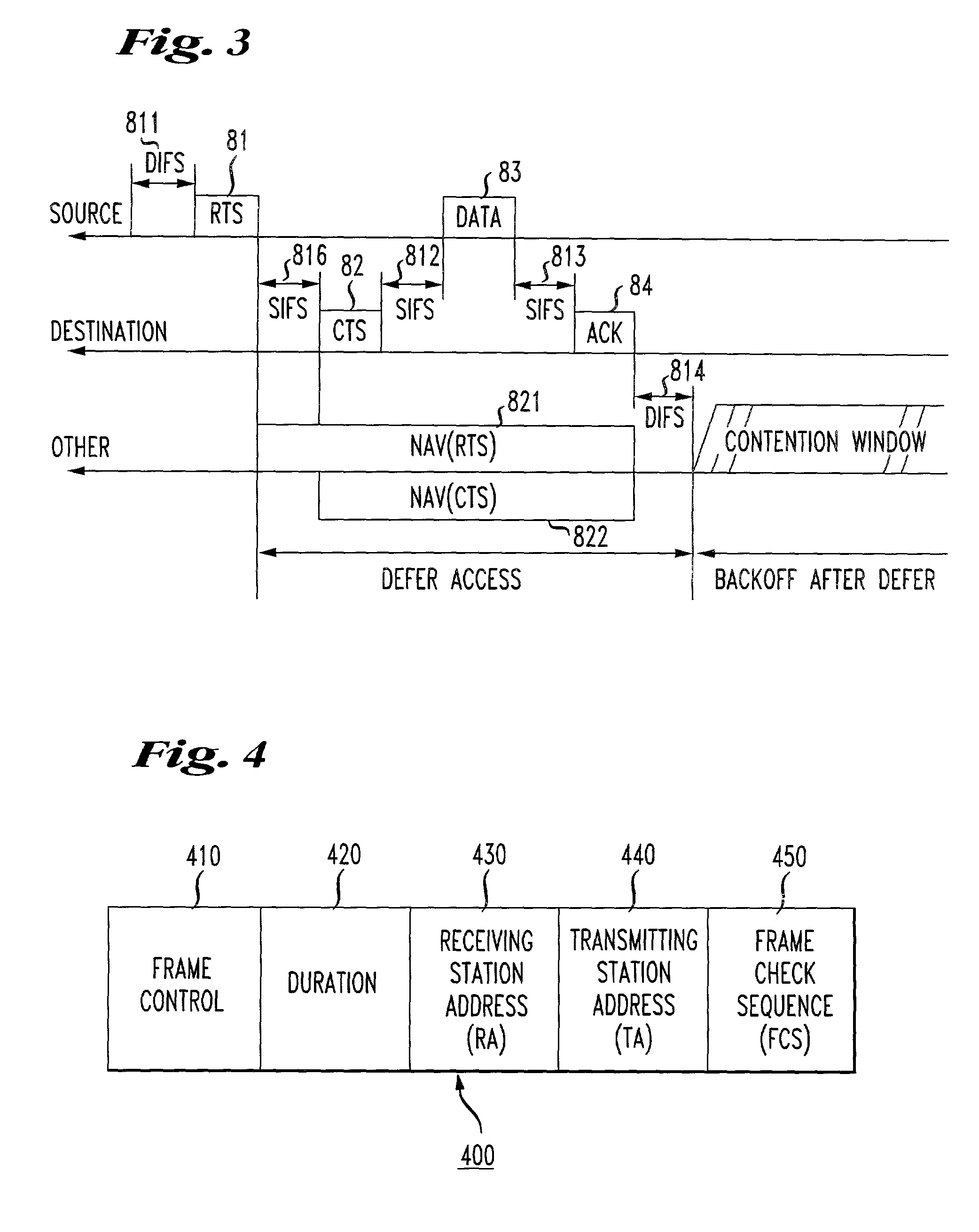Interference suppression methods for 802.11
a suppression method and 802.11 technology, applied in the field of interference suppression methods for 802 . 11, can solve the problems of not all new stations practicing wireless local area networks that may not understand these new protocols, and local area networks that may not be equipped to practice the enhanced 802.11e standard, so as to prevent interference from hidden stations
- Summary
- Abstract
- Description
- Claims
- Application Information
AI Technical Summary
Benefits of technology
Problems solved by technology
Method used
Image
Examples
Embodiment Construction
[0026]FIG. 1 discloses an exemplary embodiment of a wireless local area network (WLAN). It should be appreciated that various types of local area networks for forwarding messages to and receiving messages from network stations may be employed in the various exemplary embodiments of this invention.
[0027]As shown in FIG. 1, the wireless local area network 10 includes a distribution system 100, stations 160-1 and 160-2 provided in a first basic service set BSS1 having the same basic service, and stations 160-3 and 160-4 provided in a second basic service set BSS2 having the same basic service. For example, stations 160-1 and 160-2 are network stations provided within a cell under a common coordinating function, with one of the stations providing access to the distribution system 100 being an access point (AP) to a basic service set. Similarly, stations 160-3 and 160-4 are network stations provided within a cell under a common coordinating function, with one of the stations providing ac...
PUM
 Login to View More
Login to View More Abstract
Description
Claims
Application Information
 Login to View More
Login to View More - R&D
- Intellectual Property
- Life Sciences
- Materials
- Tech Scout
- Unparalleled Data Quality
- Higher Quality Content
- 60% Fewer Hallucinations
Browse by: Latest US Patents, China's latest patents, Technical Efficacy Thesaurus, Application Domain, Technology Topic, Popular Technical Reports.
© 2025 PatSnap. All rights reserved.Legal|Privacy policy|Modern Slavery Act Transparency Statement|Sitemap|About US| Contact US: help@patsnap.com



